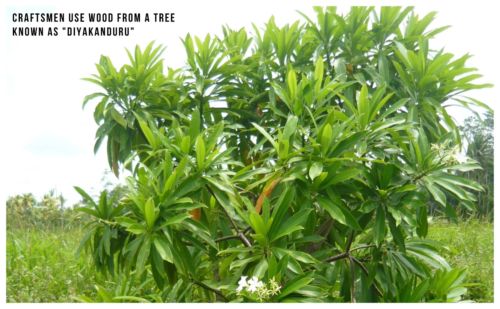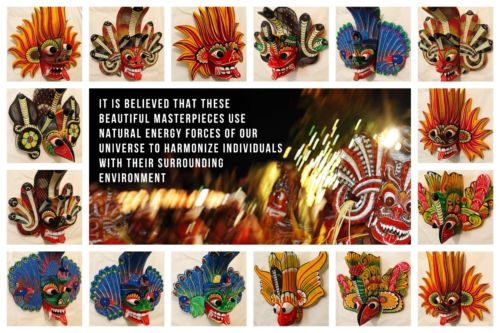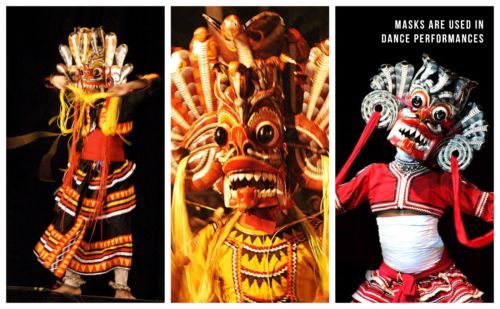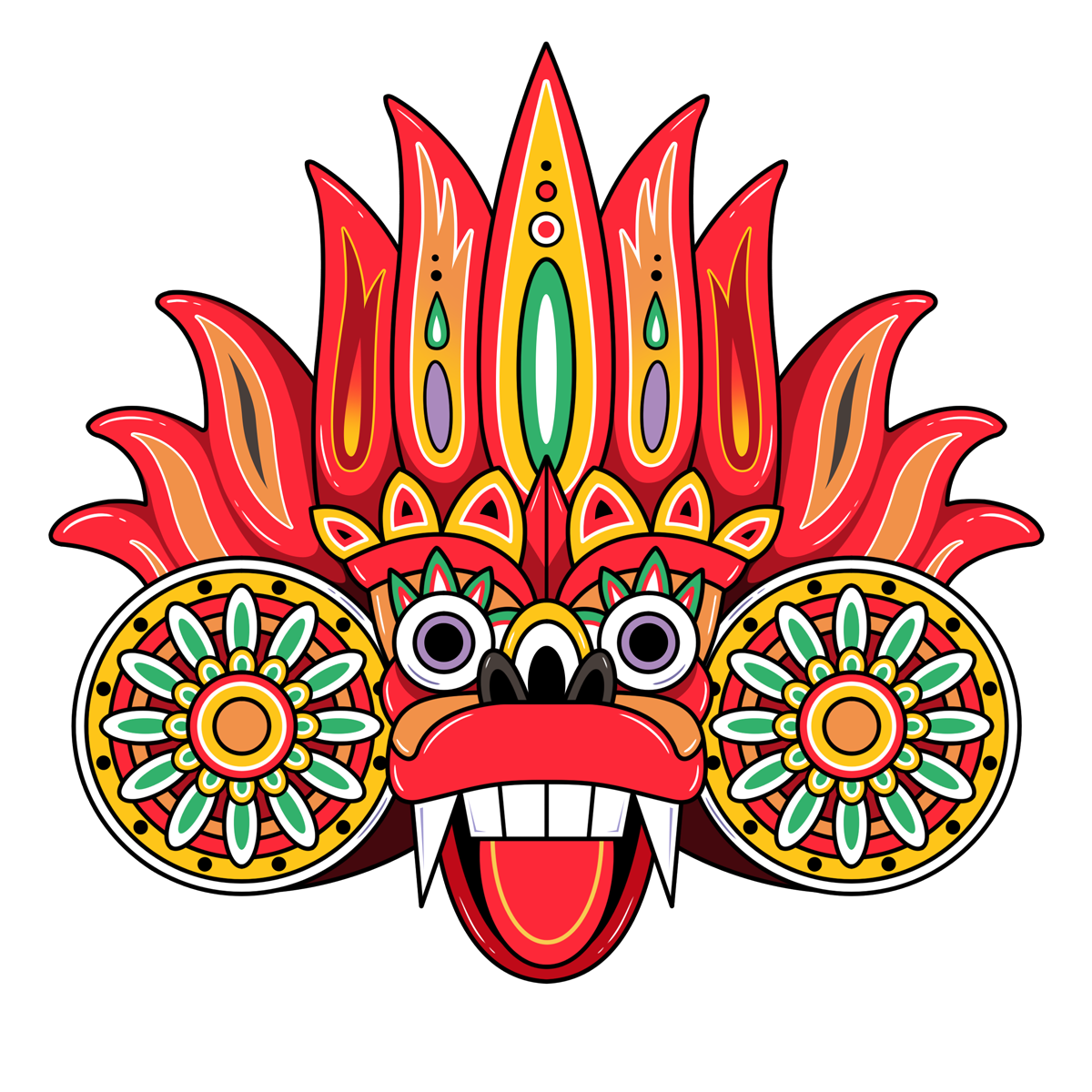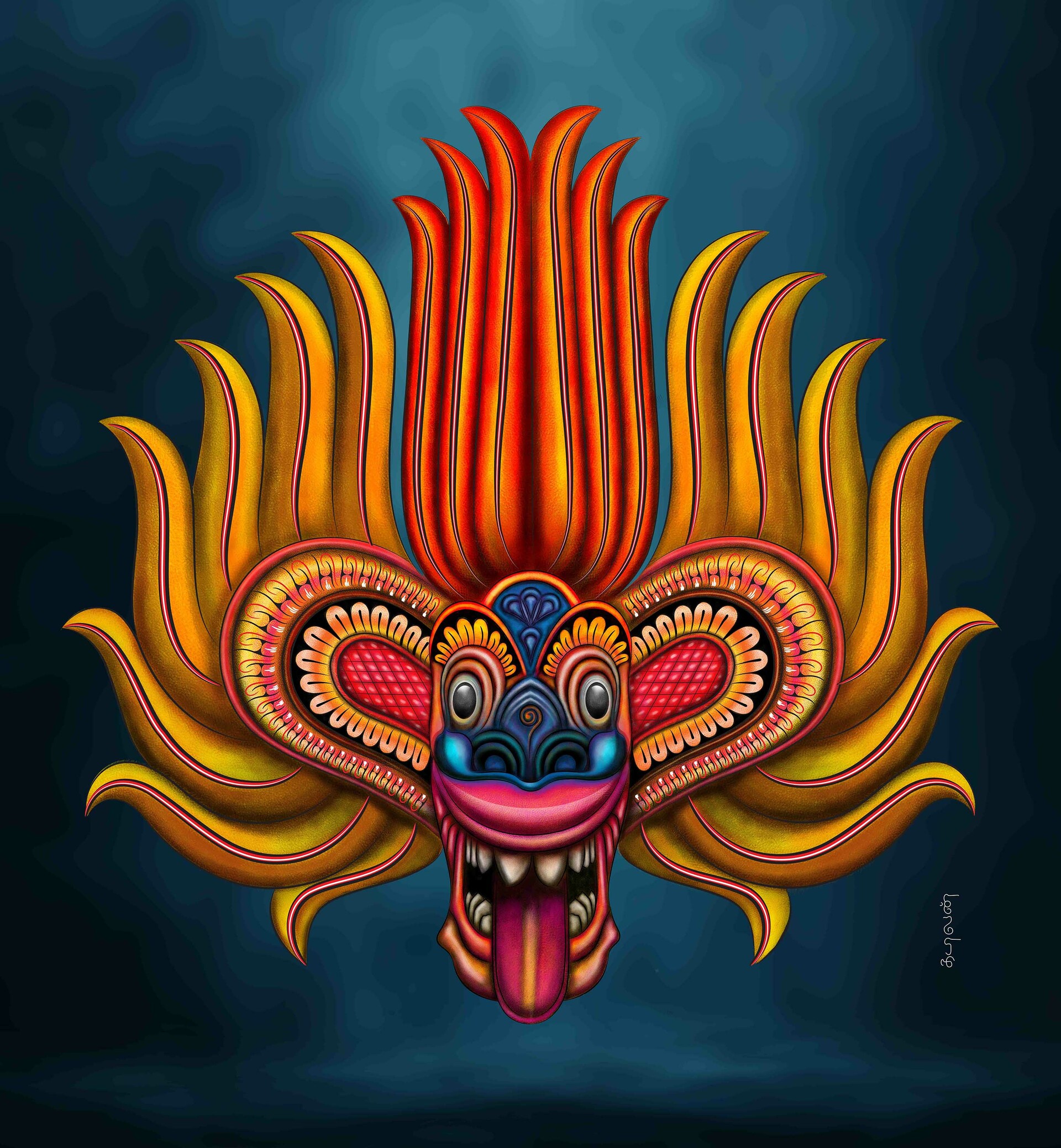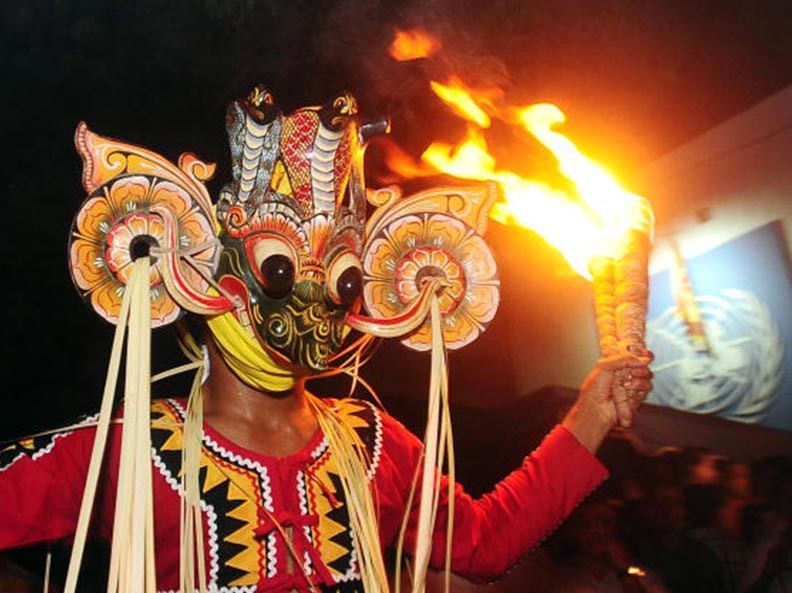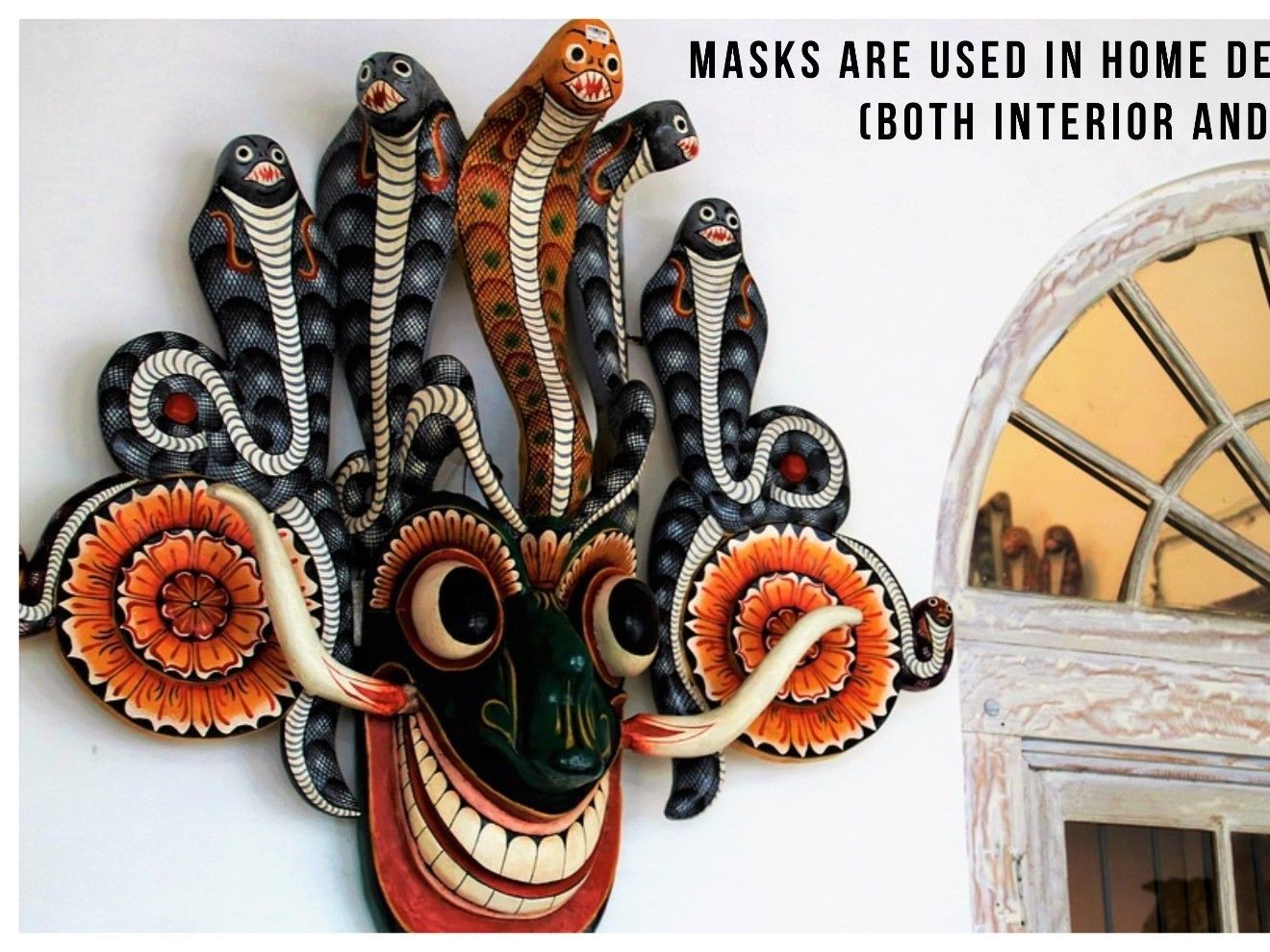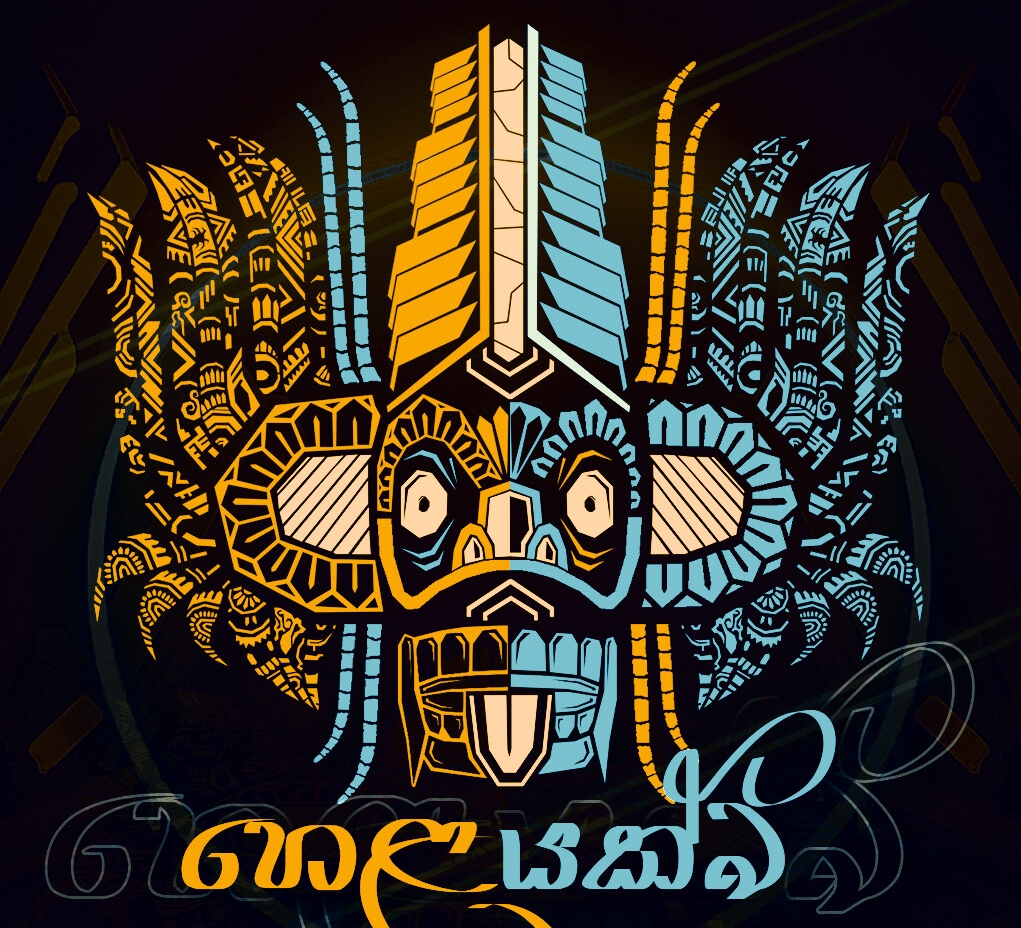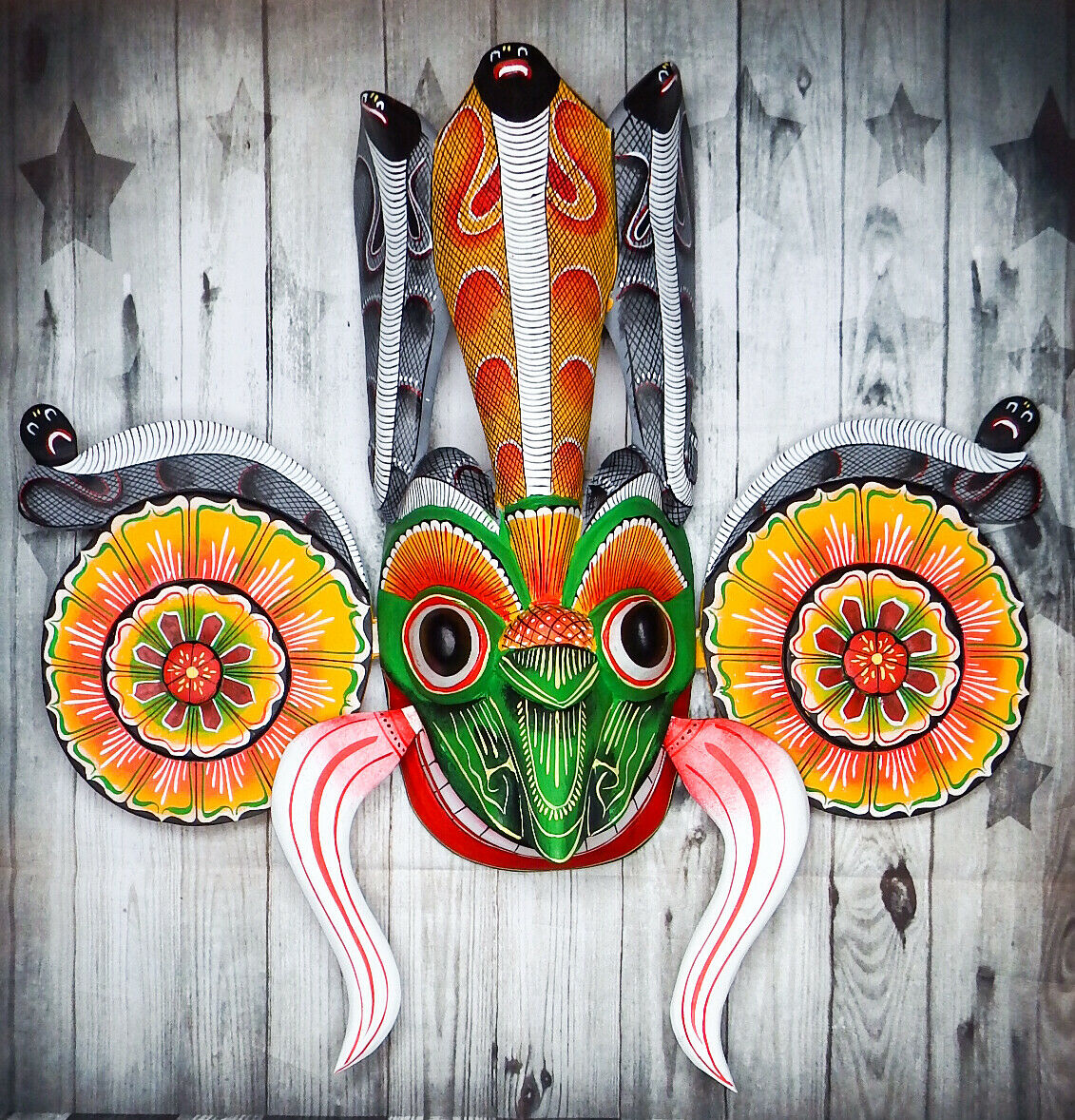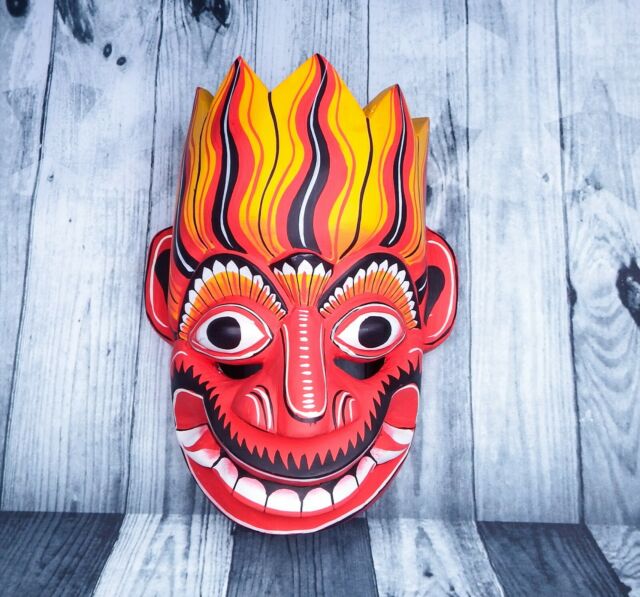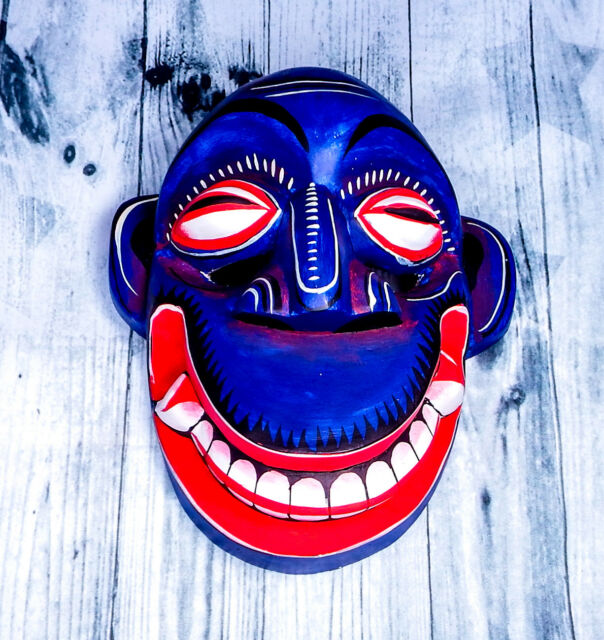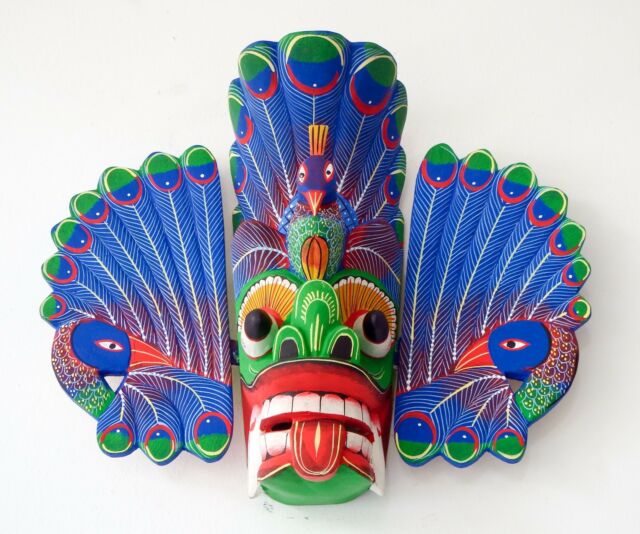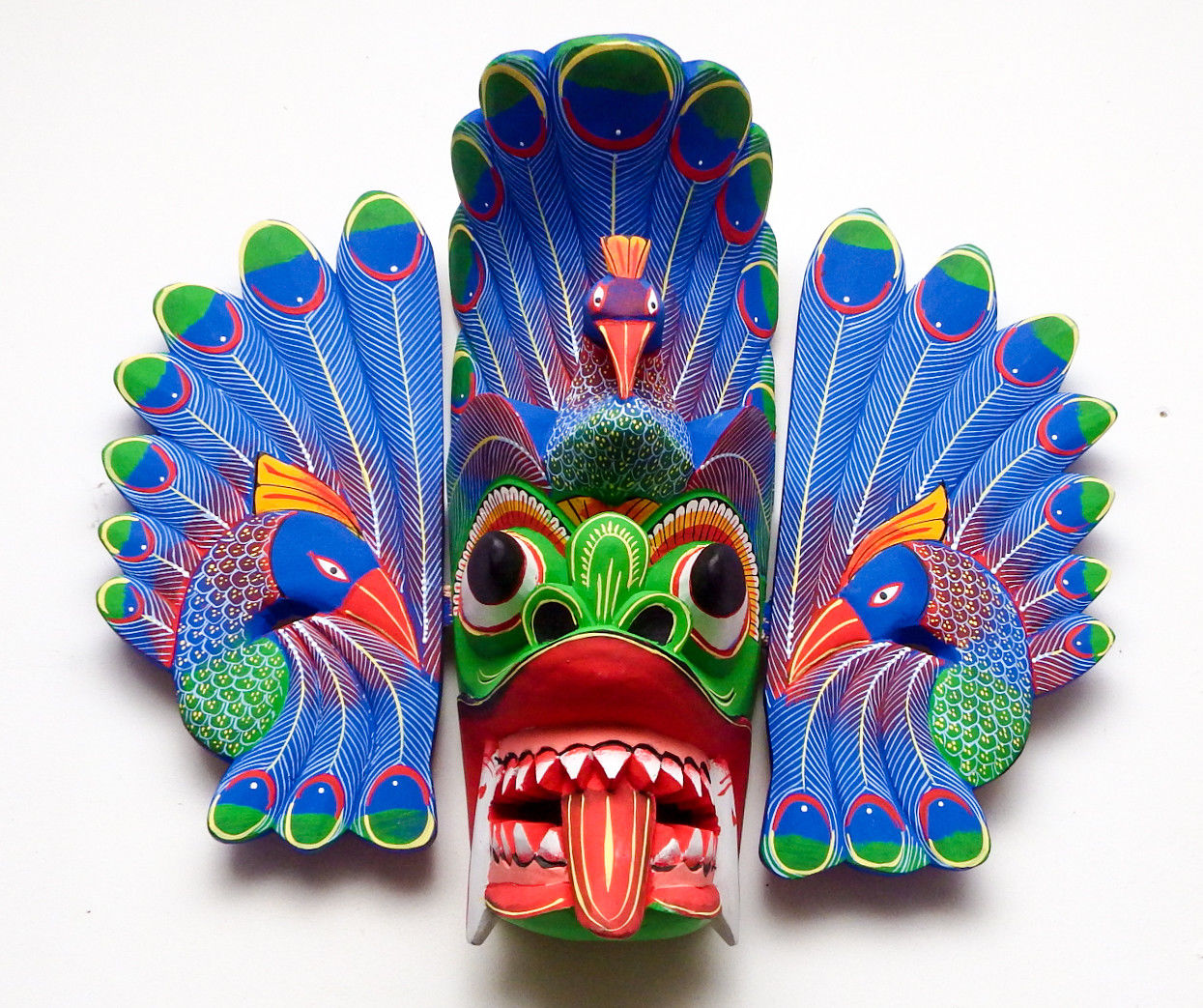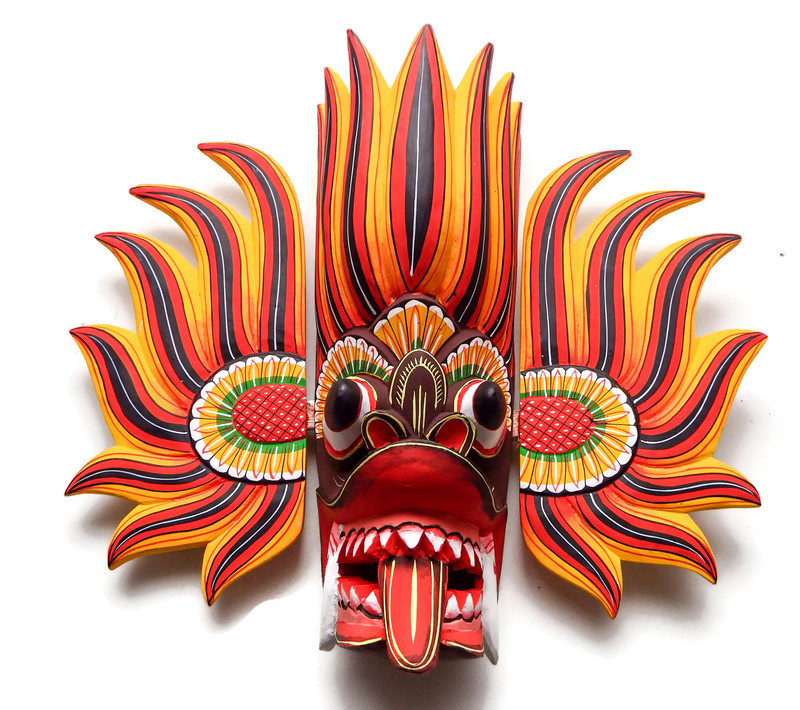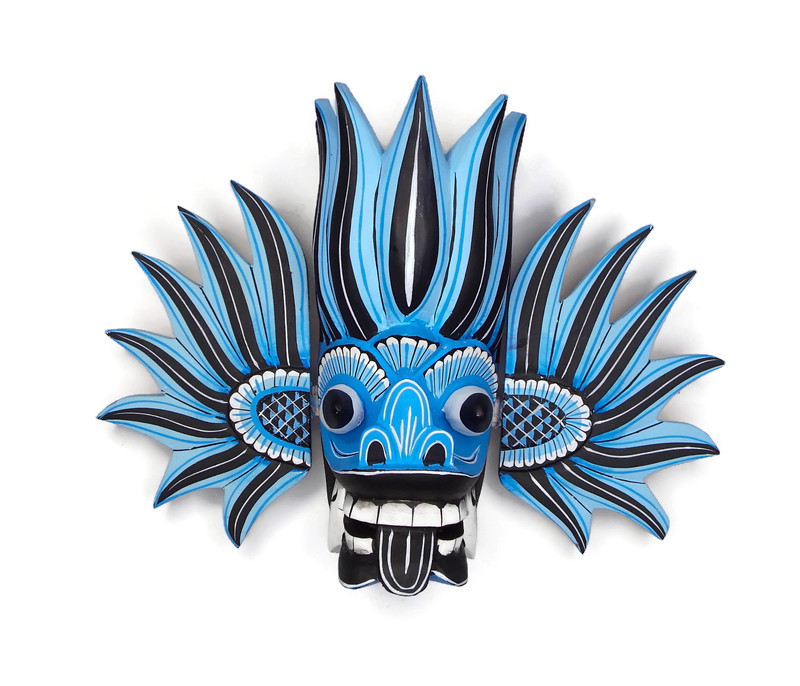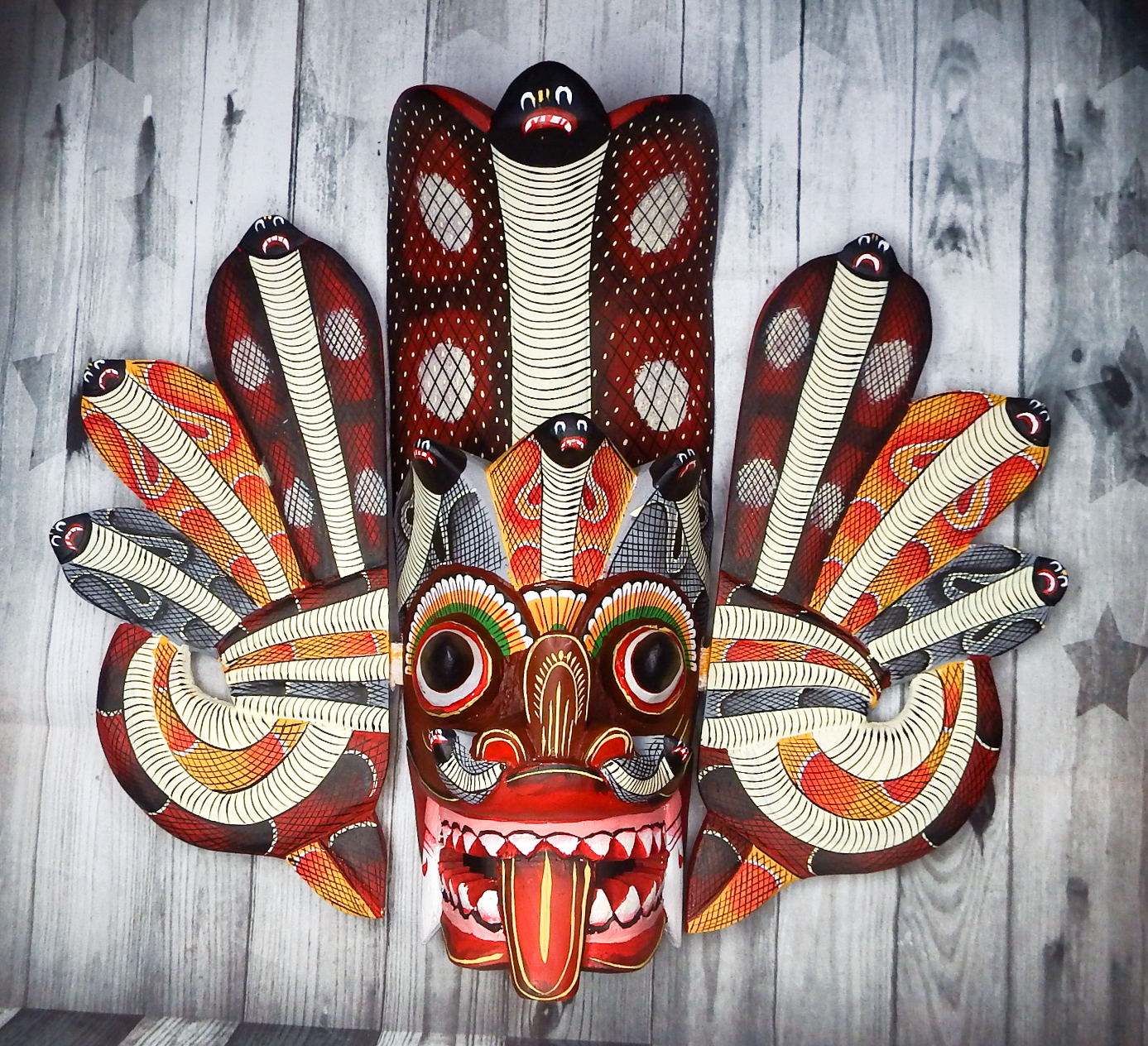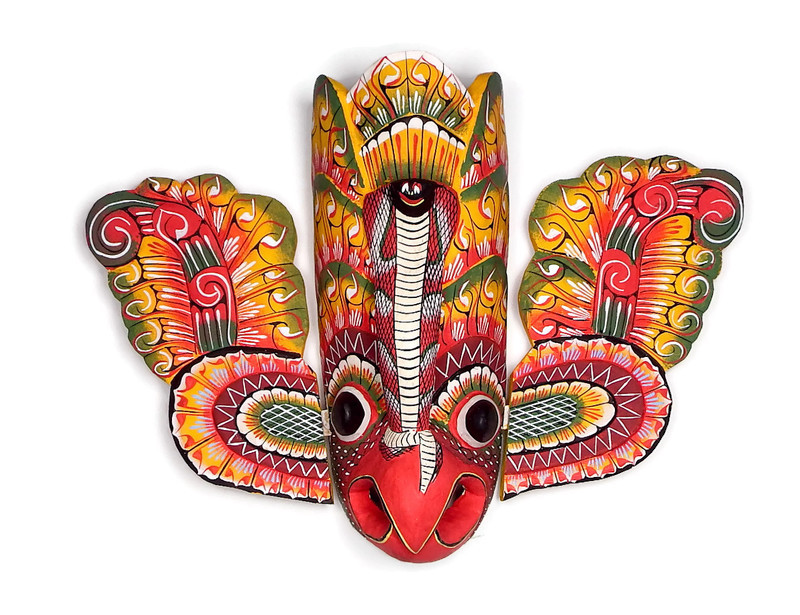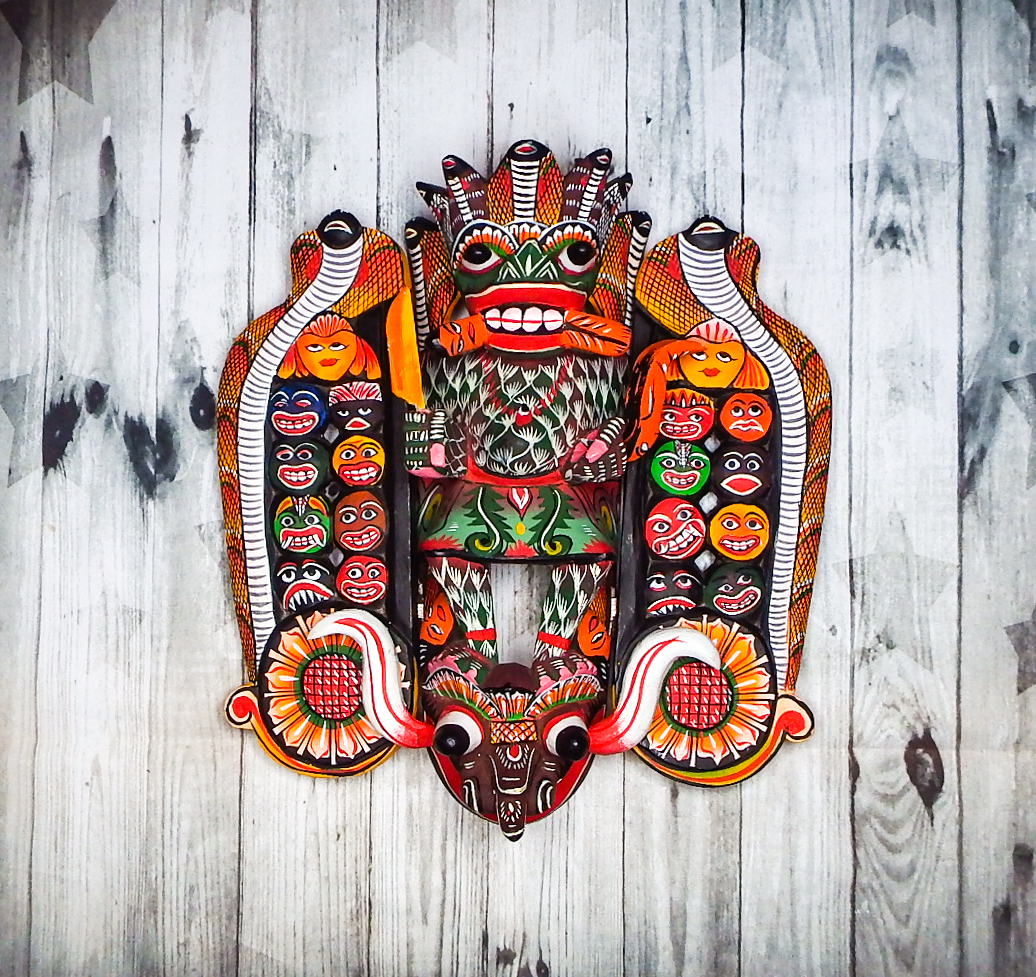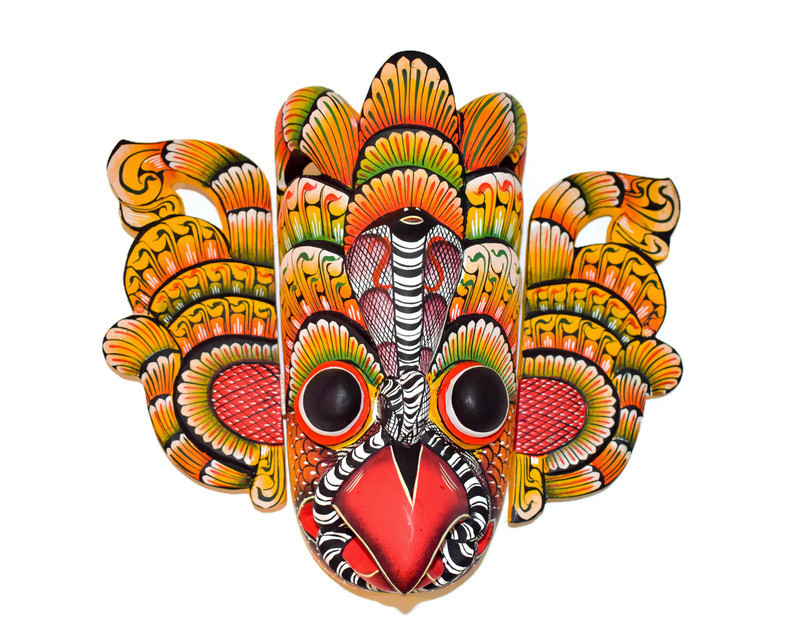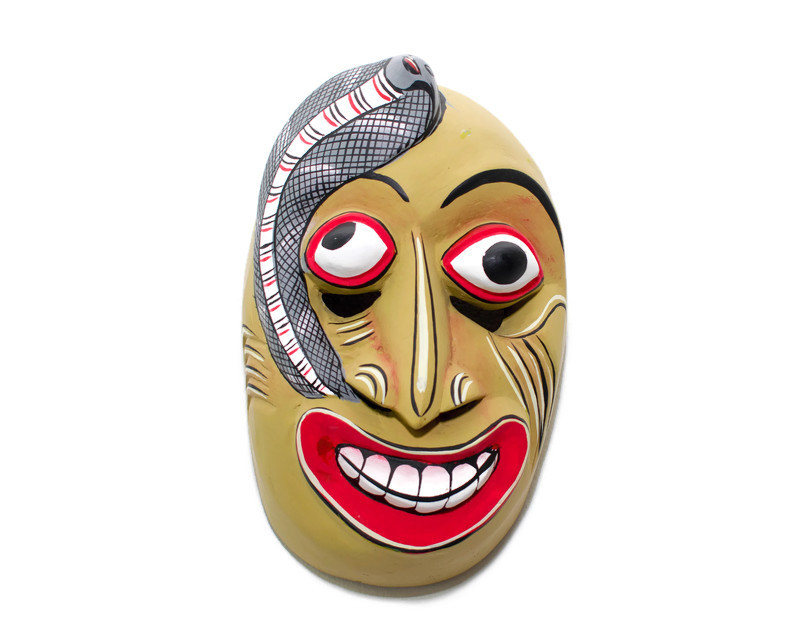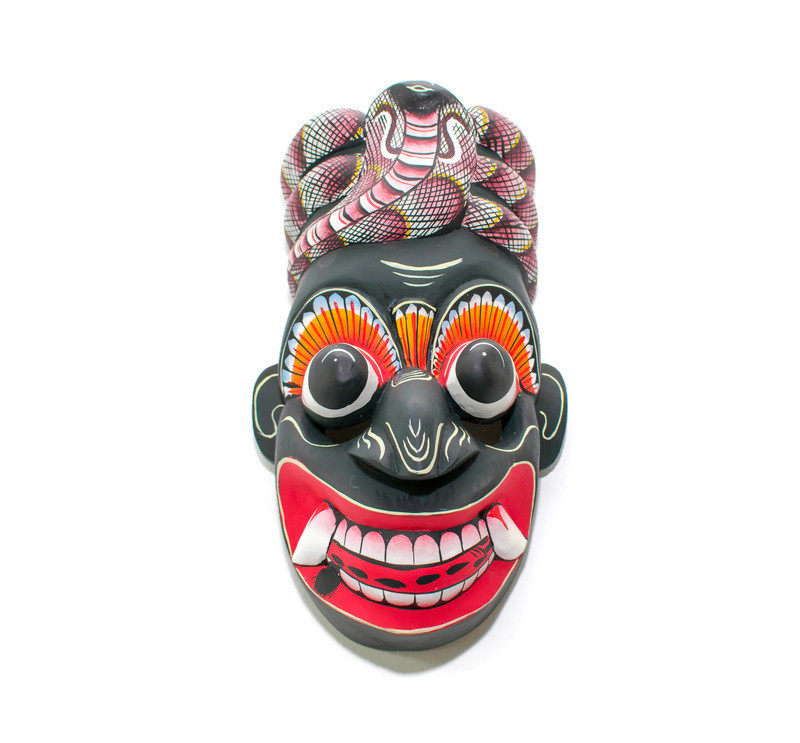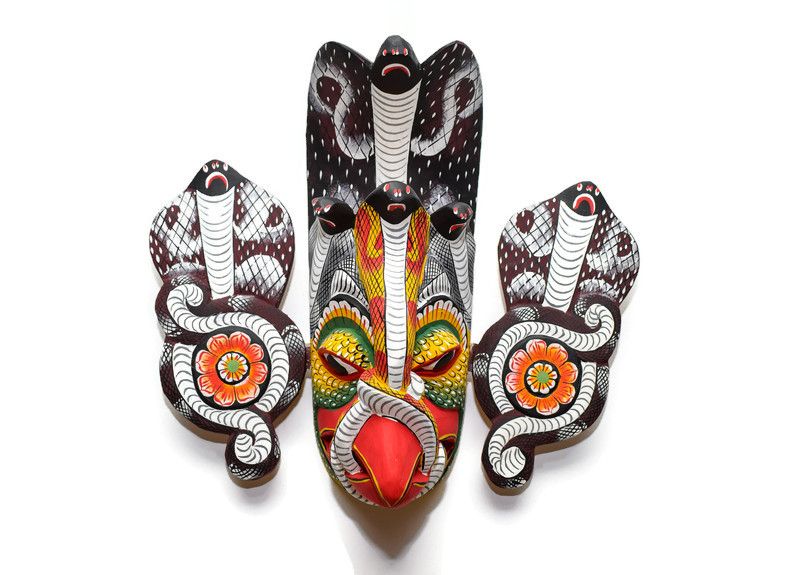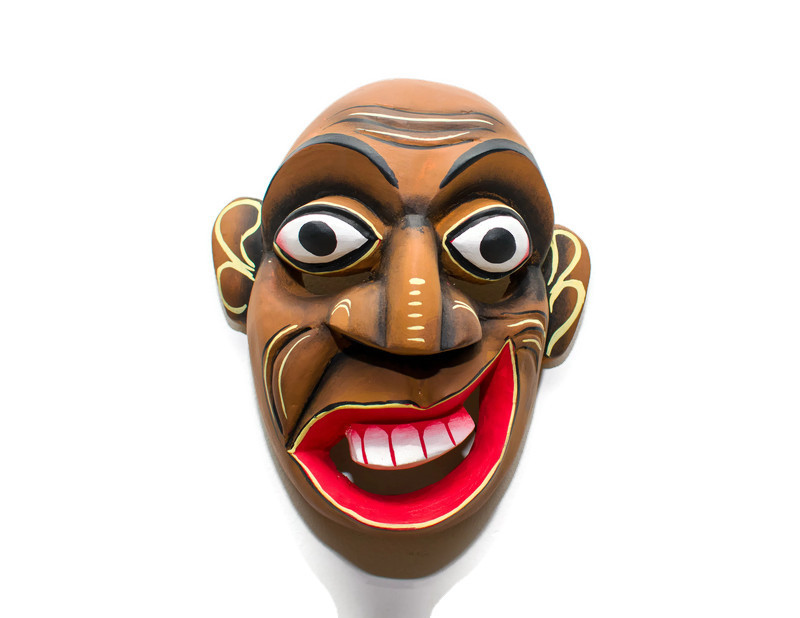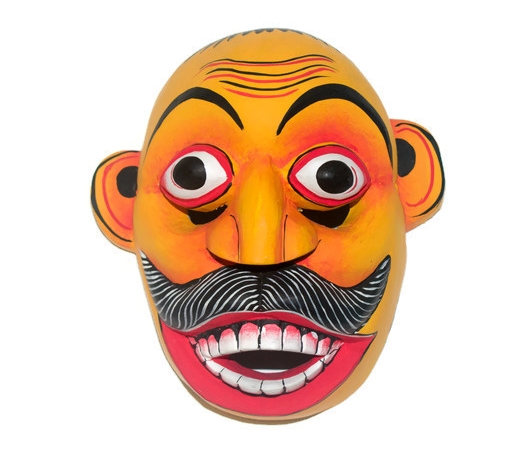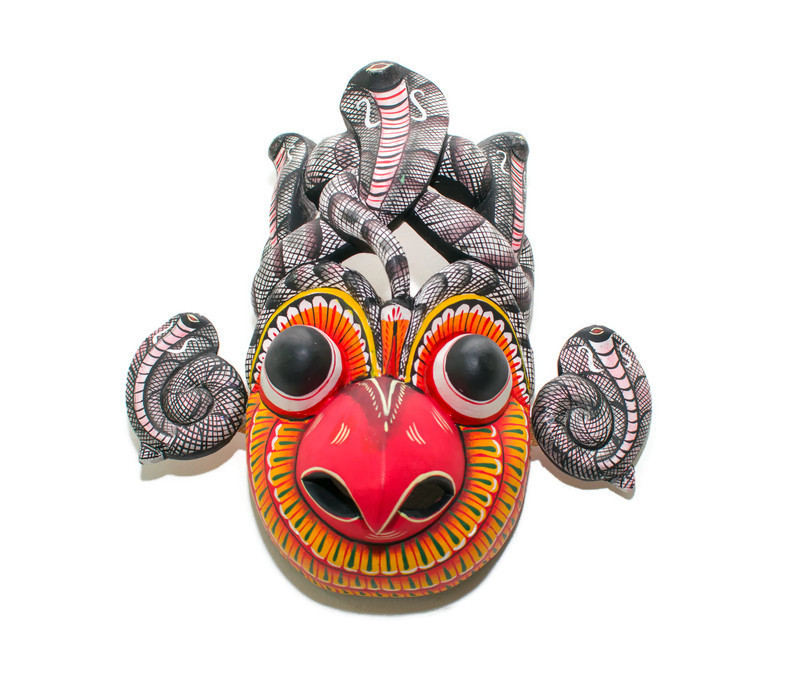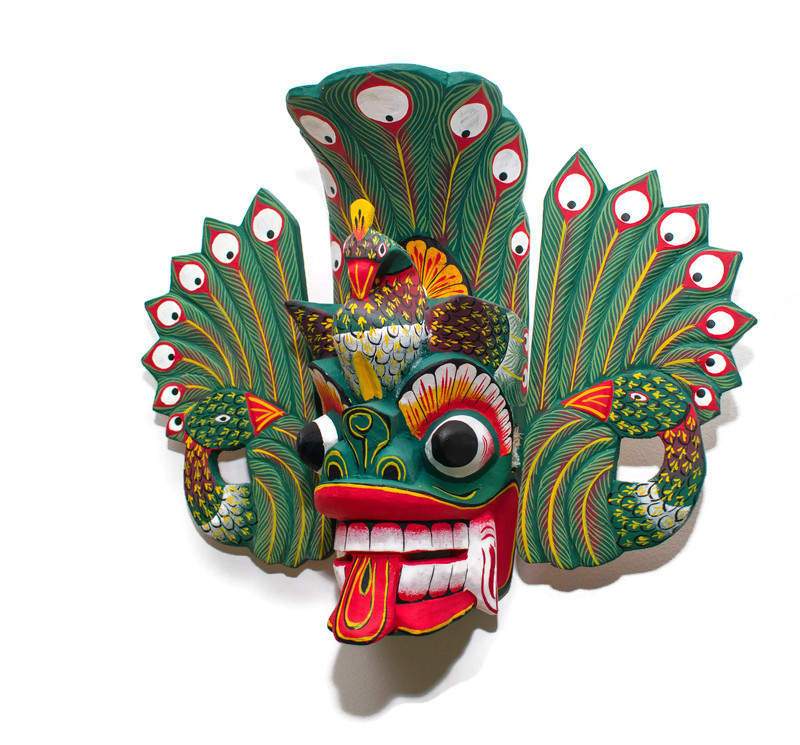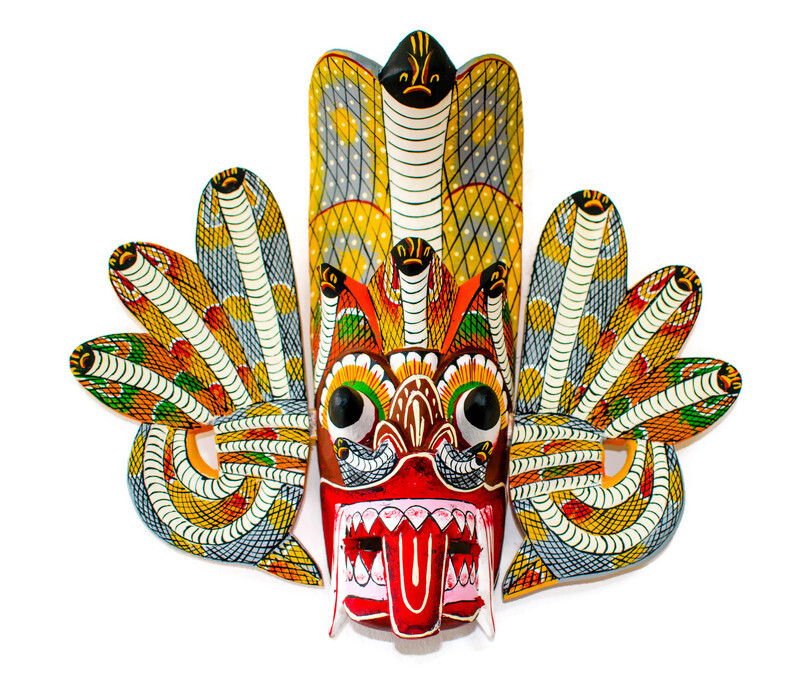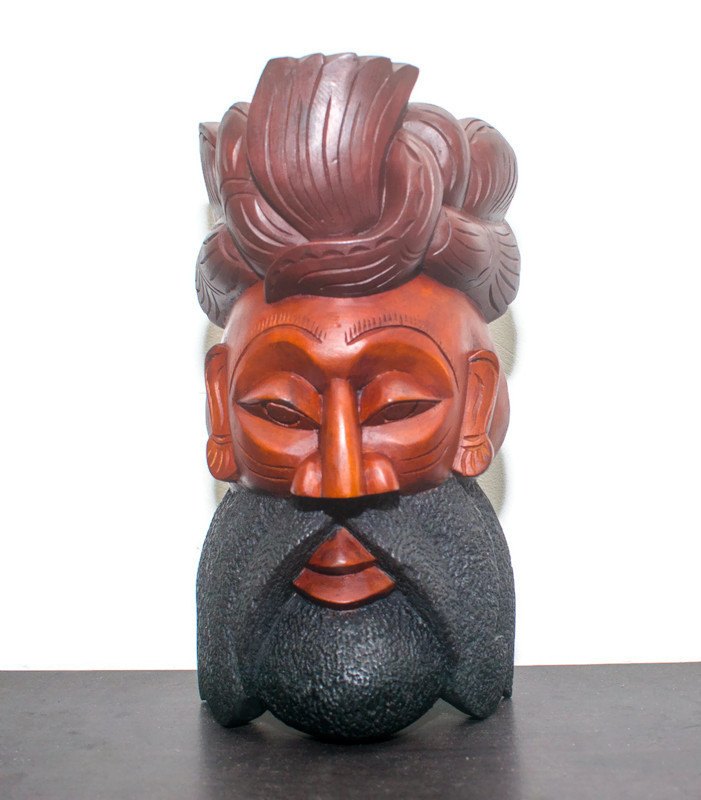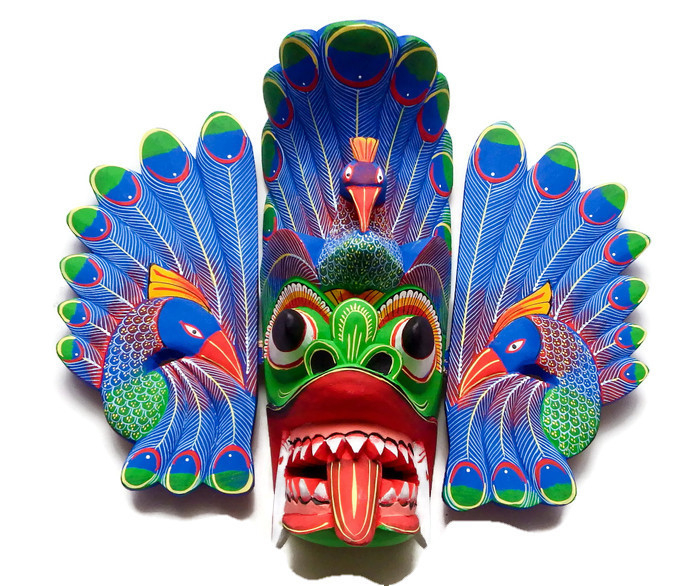The craftsmen of Henegama mainly use the timber of the Kaduru tree (Strychnos nux-vomica), which is transported all the way from Elpitiya. It is their choice of wood because the kaduru timber does not rot and is easy to cut. Ruk attana (Alstonia scholaris) timber is also used at times, yet is not the preferred choice. The logs of timber are first chopped into a certain category of size. Then with the porawa (axe) the preliminary shaping of the log takes place.
Next is the most time consuming part, sculpting and embellishing. With nimble fingers craftsmen breath life into the wood, giving it shape, raksha features and imbuing it with centuries worth of tradition. Once sculpted and sandpapered, his day's work is done. The next stage is to paint the basecoat with a substance made at home with whiting (chalk) powder. Laid along tarmacs or home gardens, in the tropical heat they are left to dry.
The Craftsmen Of Henegama Have Quite Talentedly And Nimbly Adapted Their Designs To Suit Modern Requirements. Their Masks Now Come In Mini Versions For Key Tags And Refrigerator Magnets. Or As Larger-Than-Life Versions For Artistic Displays At Leisure Venues.
In the spirit of coexistence and village comradery, in Henegama there is a systematic differentiation of tasks. While the skilled craftsmen sculpture the wood, the talented painters of the village give these masks their charismatic and animated colour. It was amidst one such artist's shed that we met Deepika Rupesinghe diligently immersed in her world of art. Her workspace was cluttered with masks by craftsmen from across the village. To paint the detailed thin drawings, these artists use a brush they make themselves with cat hair; to them there is no finer brush. Though masks of the past had a glossy shine, today the matte texture is popular.
These Masks May Differ From The More Elaborate Ones Of Ancient Times, Yet They Retain The Bold Hues And Features Of Sri Lanka’s Rich Heritage Of Artistry.
In shape, these masks may differ from the more elaborate ones of ancient times, yet they retain the bold hues and features of Sri Lanka's rich heritage of artistry. A popular mask made in Henegama is ‘Mayura Muhuna' - a mask distinct with blue and green colours and inspired by the peacock. The ‘Ginidel' mask is bright with red and orange tongues of flames. The ‘Ratnakuta Muhuna' is characterised with cobras around it while the Gurulu mask is said to be based on a mythical bird believed to banish cobras.
Designs, with frightful features, are based on the traditional raksha (devil) masks used in raksha folk dances. These were performed for the protection of villages in ancient times, each mask associated with dispelling a particular evil. The masks, of Henegama, though different, are associated with the same apotropaic beliefs. These are sought after for homes and workplaces to be displayed for protection against the evil eye.
Though Henegama cannot trace the origins of mask-making in their village, the decades old tradition continues. Their tireless efforts and skill keeps alive the island's artistic legacy.





